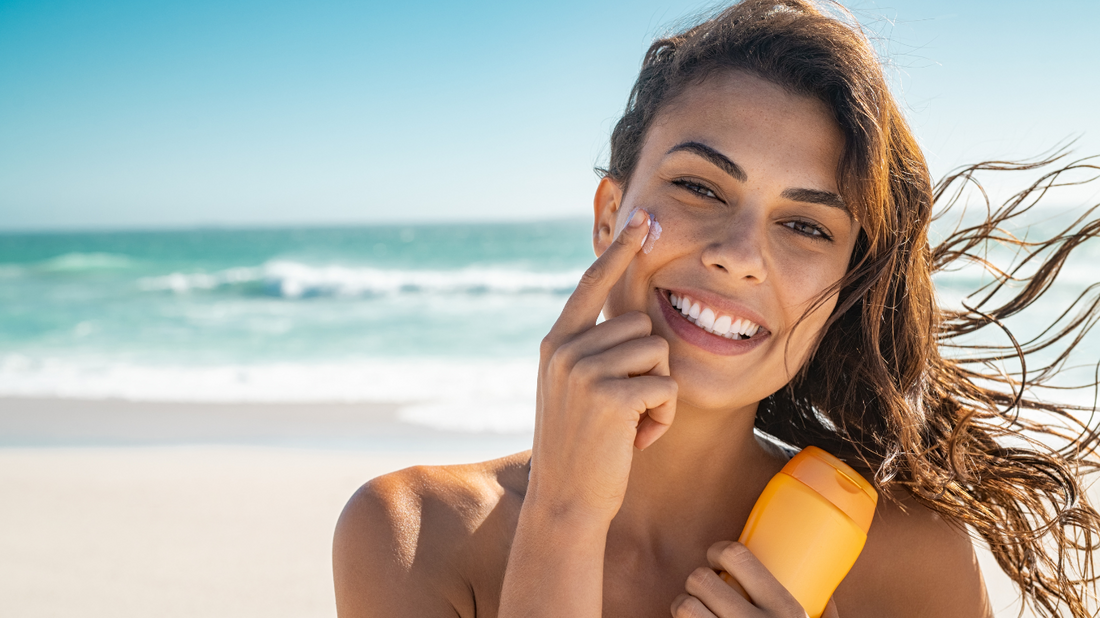When it comes to protecting our skin from the sun's harmful rays, the terms "sunscreen" and "sunblock" are often used interchangeably. However, they actually refer to different types of products with varying mechanisms of action. In this blog post, we will delve into the distinctions between sunscreen and sunblock, exploring their formulations, application methods, and effectiveness. By understanding these differences, you can make an informed decision about which type of sun protection is best suited for your needs.
Sunscreen: Shielding with Chemical Filters
Sunscreen refers to products that primarily utilize chemical filters to protect the skin from UV radiation. These filters, such as avobenzone, octinoxate, or oxybenzone, work by absorbing UV rays and converting them into heat, which is then released from the skin. Sunscreens are typically lightweight, easily absorbed, and come in various forms, including lotions, creams, gels, and sprays. They are popular for their ease of application and their ability to provide broad-spectrum protection against both UVA and UVB rays.
Advantages of Sunscreen:
-
Absorbs into the skin: Sunscreens are designed to penetrate the skin, allowing for a more even distribution of protection. This characteristic makes them suitable for daily use and for application under makeup.
-
Transparent finish: Sunscreens are typically transparent once applied, leaving no visible residue on the skin. This aspect is preferred by individuals who want an invisible sun protection option.
Sunblock: Creating a Physical Barrier
Sunblock, on the other hand, refers to products that rely on physical or mineral filters, such as zinc oxide or titanium dioxide. These filters work by forming a physical barrier on the skin's surface, reflecting and scattering UV rays away from the skin. Sunblocks often have a thicker consistency and may leave a white cast on the skin upon application, although newer formulations are now available with improved texture and reduced white residue.
Advantages of Sunblock:
-
Immediate protection: Since sunblocks create a physical barrier, they provide immediate protection as soon as they are applied. There is no waiting time for the product to become effective.
-
Broad-spectrum coverage: Sunblocks also offer broad-spectrum protection against UVA and UVB rays. Their mineral filters provide reliable defense against the sun's harmful effects.
Choosing the Right Protection:
When selecting between sunscreen and sunblock, it's crucial to consider your skin type, lifestyle, and personal preferences. Here are a few factors to keep in mind:
-
Skin sensitivity: If you have sensitive or easily irritated skin, sunblocks with mineral filters may be a better option, as they are less likely to cause skin reactions.
-
Desired finish: If you prefer a lightweight, transparent finish that seamlessly blends into your skin, sunscreen with chemical filters is a suitable choice. However, if a visible physical barrier doesn't bother you, sunblocks with mineral filters can offer excellent protection.
-
Application and reapplication: Both sunscreen and sunblock require reapplication every two hours, especially during prolonged sun exposure or after swimming or sweating. Consider the convenience of the application method (e.g., lotion, spray, stick) when selecting your sun protection product.
-
Environmental impact: If you are concerned about the environmental impact of sunscreen chemicals on coral reefs and marine life, mineral-based sunblocks are considered a more eco-friendly choice.
Understanding the differences between sunscreen and sunblock allows you to make an informed decision when selecting your sun protection product. Sunscreens, with their chemical filters, offer a lightweight and transparent option, while sunblocks, with mineral filters, create a physical barrier on the skin. Consider your skin type, desired finish, and environmental

